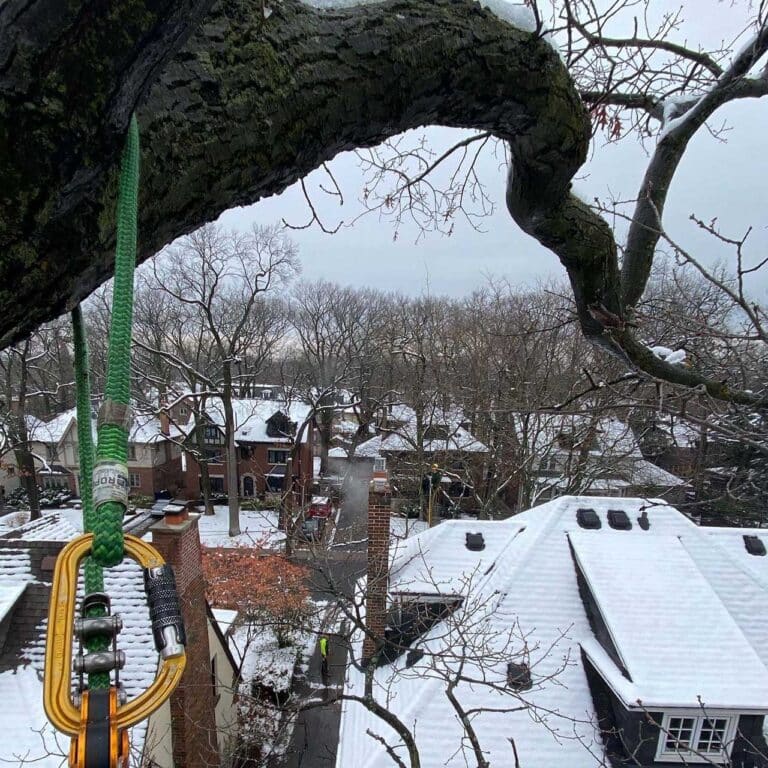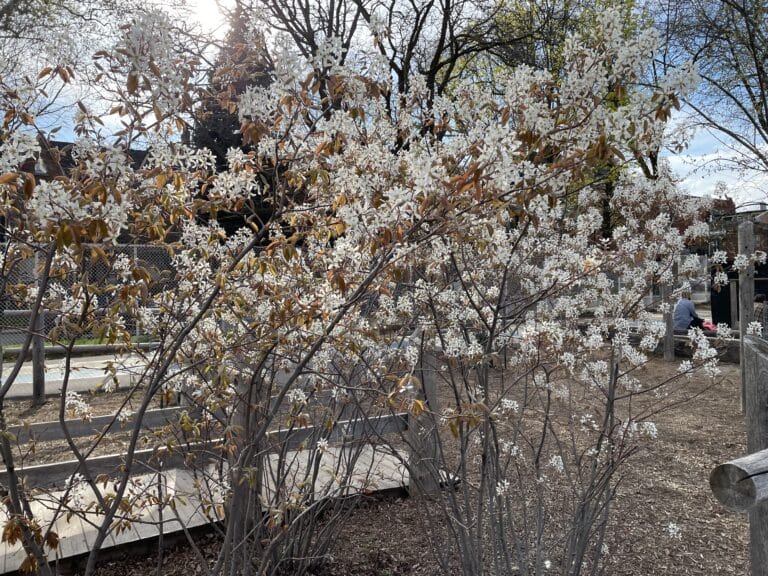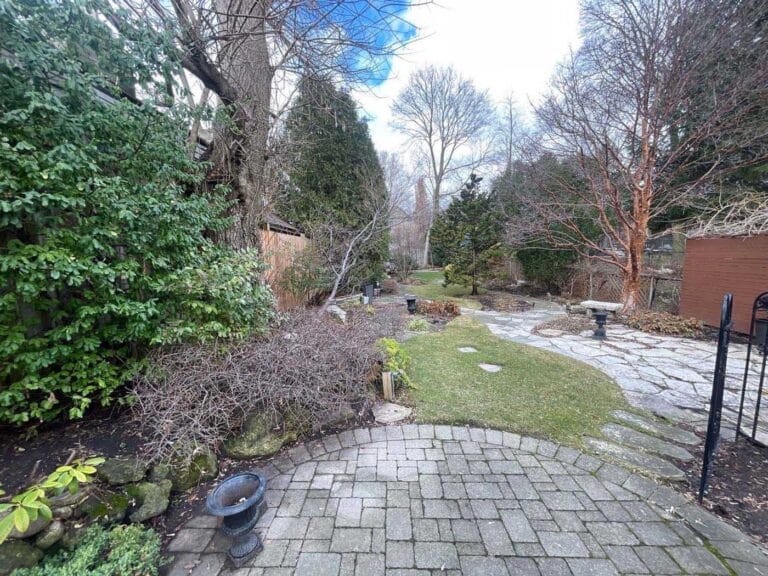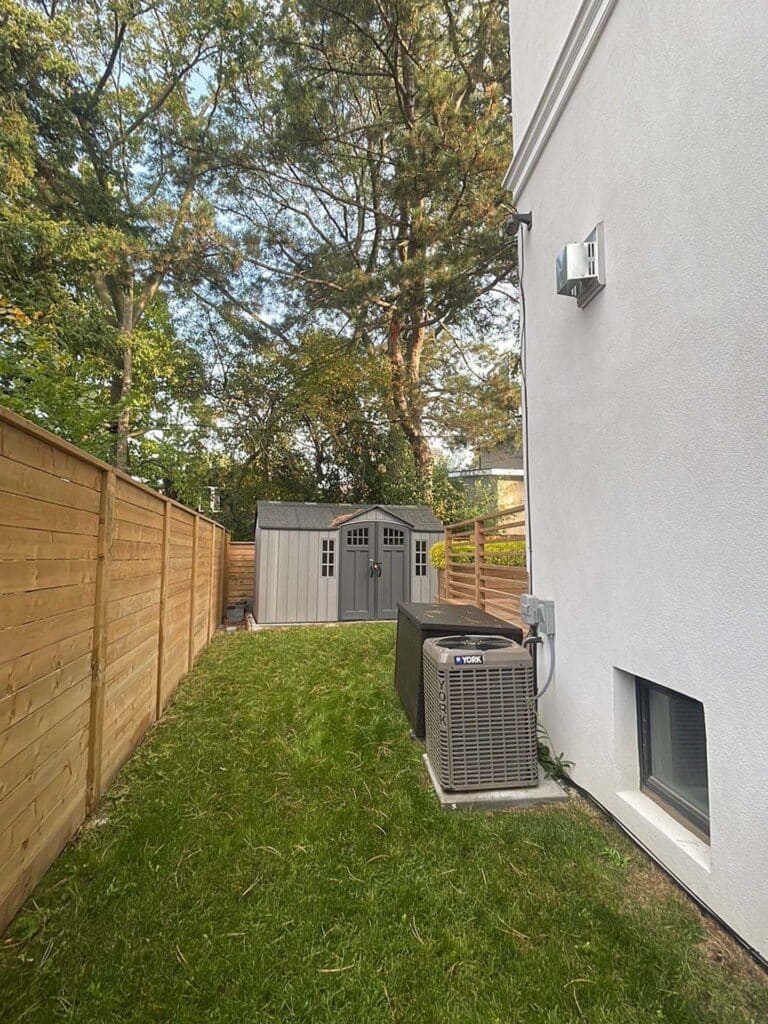Prune Oak Trees to Keep them Healthy
Pruning oak trees is essential for their health, longevity, and safety, especially in urban environments. But what’s the optimal time to prune oak trees in Toronto?
The best time to prune oak trees is during the colder months, from November to March. During this period, oak trees are dormant, and the risk of contracting diseases like oak wilt is significantly reduced.
But before you book an appointment with a tree care specialist, take the time to learn a little more about oak tree pruning. Let’s take a detailed look at why timing matters, the different types of pruning that benefit mature oaks, and why proactive care is critical for urban oak trees.
Why Winter is the Best Time to Prune Oak Trees
Pruning trees during the colder months has several key advantages. Toronto’s oak trees face the threat of oak wilt, a fungal disease that spreads quickly and can kill trees in a matter of weeks. While there are no confirmed cases in the GTA yet, it has been confirmed in Ontario and is already devastating oaks across North America.
The disease is transmitted primarily by sap-feeding beetles, which are active during warmer months when temperatures range between 10°C and 30°C. By pruning oaks in winter – the optimal time to prune oak trees – you minimize the risk of beetles being attracted to fresh pruning cuts.
Why does winter pruning work best?
During winter, oak trees enter a dormant phase, similar to hibernation. Their growth slows significantly as they conserve energy, which reduces the stress caused by pruning. Additionally, because sap flow is minimal during dormancy, the tree can heal more efficiently in spring when active growth resumes.
By pruning your oak tree in winter, you’re giving it the best chance to recover without the added risk of pest and disease exposure.
Types of Pruning for Oak Trees

While choosing the optimal time to prune oak trees in Toronto is important, did you know the type of pruning you choose can also make a significant difference in its overall health and appearance? Let’s look at some common methods our qualified arborist team specializes in that are especially beneficial for mature oak trees in Toronto:
Deadwood Removal
Dead or dying branches are not just unsightly—they’re hazardous. Removing these branches improves the tree’s appearance while reducing the risk of falling branches, which is particularly important during Toronto’s snowy winters. Deadwood can also attract pests and promote decay, so addressing this issue helps preserve the tree’s health.
Visualize it: Think of deadwood removal as tidying up the tree’s appearance while preventing potential hazards. Removing the dried, brittle limbs makes room for healthy growth.
Crown Reduction
Has your oak tree grown too large for its space? Crown reduction involves carefully trimming the outer branches to reduce the overall size of the tree’s canopy. This method ensures the tree stays balanced and healthy while maintaining a pleasing aesthetic. Proper crown reduction avoids overstressing the tree, helping it fit comfortably into urban environments like small backyards or along tight city streets.
Visualize it: After a proper crown reduction, your oak tree in Toronto has a more compact, balanced appearance, fitting its surroundings better while maintaining a natural silhouette. Its biggest branches are more compact, reducing the risk of breaking.
Crown Thinning
In urban settings, especially where air pollution and poor air circulation are common, thinning the crown can help the tree breathe. Crown thinning involves selectively removing smaller branches throughout the tree’s canopy, improving light penetration and airflow. This method reduces the risk of fungal infections and allows sunlight to reach the lower parts of the tree, fostering overall growth.
Visualize it: Picture an oak tree with sunlight filtering through its branches, creating a lighter, airier feel beneath the canopy. Thinning helps reduce the overall weight on the tree’s limbs, preventing breakage and letting light into your yard.
Hazard Prevention Pruning

Toronto’s harsh winter storms can cause weak or overextended branches to snap, posing serious risks to nearby homes, cars, and pedestrians. Hazard prevention pruning focuses on removing branches that are at risk of breaking during high winds, ice storms, or heavy snowfall. This type of pruning helps ensure that your oak tree remains strong and resilient, even in extreme weather conditions.
Signs Your Oak Tree Needs Trimming
Trimming is crucial for maintaining the health and safety of oak trees, but how can you tell when it’s time for your tree to be trimmed or pruned? Common indicators include dead or dying branches, overcrowded canopies, branches growing too close to structures, or signs of disease.
Addressing these issues early can prevent potential damage and improve the tree’s overall structure. Here are a few signs you need professional help:
- Branches with no leaves or lots of branches falling on your yard
- Leaves changing colour and dropping off faster than other trees
- Cracks or broken branches in the canopy
- Overgrown branches that look ready to break
- Oak branches rubbing on roof, or branches in power lines
- Woodpeckers, or lots of holes in bark
- Mushrooms, fungus, or oozing
Unique Challenges for Oak Trees in Toronto
While the oak tree might be Toronto’s official tree, it doesn’t have an easy go of it. Toronto’s urban environment presents unique challenges for oak trees like extreme heat, storms, drought and air pollution. Even when it rains very heavily in a year, most of this water runs off of lawns because of compressed urban soil.
These stressors can weaken the tree over time, leading to oak decline, where the tree’s health slowly deteriorates due to a combination of factors.
Addressing Common Myths About Oak Pruning in Toronto
There are several myths surrounding oak pruning that can lead to improper care. Let’s debunk a few common misconceptions to help you avoid costly mistakes:
Myth 1: You Can Prune Oaks Anytime
Many homeowners don’t realize there’s an optimal time to prune oak trees and instead believe they can prune their trees whenever it’s convenient. However, as mentioned earlier, pruning oaks during warmer months can expose them to sap-feeding beetles that spread oak wilt. Always schedule pruning between November and March for the best results – unless it’s an emergency situation.
Myth 2: Mature Oaks Don’t Need Regular Pruning
Some people think that older, established trees don’t require pruning, but this couldn’t be further from the truth. Mature oaks are often more vulnerable to diseases and structural issues. Regular pruning ensures that deadwood is removed, weak branches are trimmed, and the tree maintains its structural integrity.
Myth 3: Pruning Stunts Growth
In fact, pruning encourages healthy growth when done correctly. By removing dead or diseased branches, you allow the tree to allocate its energy to healthy limbs, promoting stronger, more resilient growth.
Myth 4: Pruning Can Be Done Without Professional Help
While some basic pruning tasks can be handled by homeowners, larger jobs—especially on mature oaks—are best left to certified arborists. Improper pruning techniques can lead to long-term damage or even the death of the tree.
How To Keep Oak Trees Healthy
Maintaining the health of your oak trees requires more than just occasional pruning. Here are some tips for proactive care:
- Mulching: Applying a 2-4 inch layer of mulch around the base of your tree helps regulate soil temperature, retain moisture, and improve root health. However, avoid piling mulch directly against the tree trunk.
- Soil Aeration: In compacted urban soils, aerating the soil can improve water and oxygen absorption, which is essential for the long-term health of your oak trees. Soil aeration for trees can be done by certified arborists.
- Watering: While Toronto doesn’t often experience prolonged droughts, it does have a lot of compacted soil and oak trees are in heavy competition for resources with neighbouring trees. Ensuring your oak tree has enough water during dry spells can prevent unnecessary stress.
Protect Toronto’s Oaks with Expert Pruning
Toronto’s oak trees are a vital part of the city’s landscape, contributing to the urban tree canopy and providing environmental and aesthetic benefits. However, these trees need proactive care to thrive. By scheduling winter pruning, practicing proper soil management, and addressing hazards early, you can help your oak trees live long, healthy lives.
At Vista Tree Management, we specialize in oak tree care and understand the unique challenges of Toronto’s urban environment. Our certified arborists use their knowledgeto ensure your trees remain strong and resilient all year round. Contact us today to schedule an appointment during the optimal time to prune oak trees in Toronto and keep your oaks in top health.
By taking action now, you’ll be safeguarding your trees from diseases like oak wilt and ensuring their longevity for years to come. Have you noticed your oak tree could benefit from a little TLC? Now’s the time to act!








